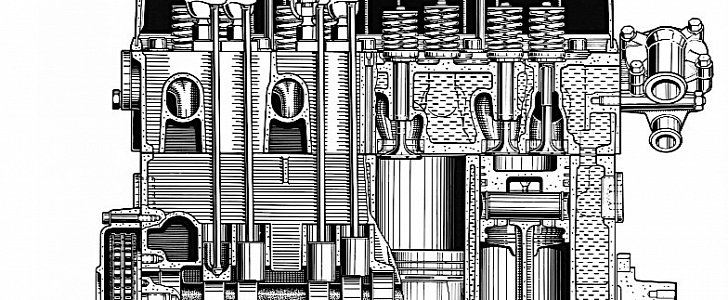Established just before the onset of World War 2, Auto Union AG, the owner of the Audi, DKW, Horch and Wanderer brands back then, found itself in somewhat of a pickle after the conflict ended. Luckily, there was this guy, Friedrich Flick, and he had a lot of Deutsche Marks.
In a statement released on Thursday, Daimler remembers how it once owned the brand with four rings. It only did so for five years, before Volkswagen buying them out, but that was enough to make Audi the brand it is today. At least that’s how their version of the story goes.
The guy we mentioned earlier, Flick, was a shareholder in both Daimler-Benz and Auto Union. He managed to have his say and convinced both companies to join forces, as their products would complement each other.
The deal was sealed exactly 60 years ago, in April 1958, when Daimler-Benz acquired a majority in Auto Union.
Unfortunately, Auto Union was a bit short-sighted, says Daimler, so the company had to be wrestled into submission. The biggest challenge was that Auto Union insisted two-stroke engines are the future, while Daimler believed that four-cylinder, four-stroke engines are the way to go.
To enforce their point of view, the new owners of Audi sent in engineer Ludwig Kraus and a “team of highly motivated young Daimler-Benz technicians.” Together, they developed the so-called Mexico engine.
The fruits of those contributions, however, fell in another brand’s backyard. Seeing Auto Union is not keen on giving up their business model and worried that it would be left selling the Audi brand only in the not-so-wealthy East Germany, Daimler began selling its shares, which were bought by Volkswagen.
The people’s car company saw the potential of the four-stroke engine introduced by Daimler and made some changes. It took inspiration from a program initiated by Daimler and created a range of cars that would later form the basis for the Audi 80.
They also took advantage of the Mexico engine and created the F103, launched on the market simply as Audi, and later as the Audi 72. It was the first post-war model under the Audi brand and the first Auto Union car to feature a four-stroke engine.
For Daimler, the entire five-year foray into enemy territory left it with only the Düsseldorf facility it took over from Auto Union. Today, the site is Daimler AG’s largest worldwide van plant.
The guy we mentioned earlier, Flick, was a shareholder in both Daimler-Benz and Auto Union. He managed to have his say and convinced both companies to join forces, as their products would complement each other.
The deal was sealed exactly 60 years ago, in April 1958, when Daimler-Benz acquired a majority in Auto Union.
Unfortunately, Auto Union was a bit short-sighted, says Daimler, so the company had to be wrestled into submission. The biggest challenge was that Auto Union insisted two-stroke engines are the future, while Daimler believed that four-cylinder, four-stroke engines are the way to go.
To enforce their point of view, the new owners of Audi sent in engineer Ludwig Kraus and a “team of highly motivated young Daimler-Benz technicians.” Together, they developed the so-called Mexico engine.
The fruits of those contributions, however, fell in another brand’s backyard. Seeing Auto Union is not keen on giving up their business model and worried that it would be left selling the Audi brand only in the not-so-wealthy East Germany, Daimler began selling its shares, which were bought by Volkswagen.
The people’s car company saw the potential of the four-stroke engine introduced by Daimler and made some changes. It took inspiration from a program initiated by Daimler and created a range of cars that would later form the basis for the Audi 80.
They also took advantage of the Mexico engine and created the F103, launched on the market simply as Audi, and later as the Audi 72. It was the first post-war model under the Audi brand and the first Auto Union car to feature a four-stroke engine.
For Daimler, the entire five-year foray into enemy territory left it with only the Düsseldorf facility it took over from Auto Union. Today, the site is Daimler AG’s largest worldwide van plant.



